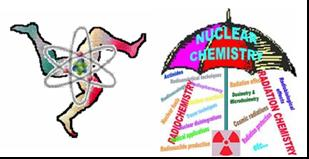Speaker
Mr
Paweł Grabowski
(Technical University of Lodz, Department of Chemistry, Institute of Applied Radiation Chemistry)
Description
The uranium chain radionuclides are usually used for a wide range of application in the Earth Sciences. The 234U/238U activity ratio is used as a geochemical tool to investigate transport and flow relationships in major hydrological reservoirs, groundwater pattern and it is highly useful for interpreting timescales of weathering. In rocks older than a few million years, 234U/238U activity ratios should be in secular equilibrium. Nevertheless, the highly energetic alpha decay of 238U damages a mineral’s crystalline lattice and allows 234U to be more mobile during weathering of rock by atmospheric water [1].
In this work, the activity concentration and isotopic ratio of uranium isotopes (234U/238U) were determined in selected thermal groundwater, ground and surface water samples from central Poland. Additionally the radionuclides concentration in one sample of thermal groundwater from southwest Poland were determined. Uranium isotopes after co-precipitation with hydrated manganese dioxide were separated from other natural radionuclides by extraction chromatography resin (Dowex 1x8). The activity concentrations were determined by using α spectrometry with PIPS detector (Camberra).
Concentration of 234U and 238U in the examined waters varied from 0.75 mBq/dm3 to 16.8 mBq/dm3 and from 0.64 mBq/dm3 to 45.5 mBq/dm3 respectively. The highest uranium concentrations were measured in the thermal groundwater from Mszczonow and Cieplice, while the lowest were observed in ground water from Plock which are got out from Cretaceous geological formation. The 234U/238U activity ratio varied from 0.370 (Cieplice) to 1.205 (Plock – Tertiary geological formation). It confirms that the uranium isotopic ratio can be useful indicator for determination of surface water infiltration input into the underground water reservoirs.
[1] Camacho A., Devesa R., Valles I., Serrano I., Soler J., Blazquez S., Ortega X., Matia L.: J. Environ. Radioact. 101, 1048 (2010)
Primary author
Mr
Paweł Grabowski
(Technical University of Lodz, Department of Chemistry, Institute of Applied Radiation Chemistry)
Co-author
Prof.
Henryk Bem
(Technical University of Lodz, Department of Chemistry, Institute of Applied Radiation Chemistry)




